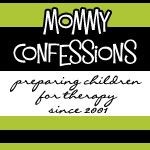How
My Sister Saved Her Own Life and Acted F-A-S-T
It was 1:50 p.m. “Ten til two,” said Gayle when the
emergency room physicians asked her what time the episode occurred. She knew
the time because she had a hair appointment and the boys, who had borrowed her
car, planned to pick her up at 2:00. She had ten minutes to get ready, and the
so-called episode began as she brushed her teeth.
“With my face bowed toward the sink and a toothbrush in my
mouth, suddenly it felt as though my teeth were crumbling,” she recounted. “It
was the oddest feeling, and actually, one of my worse nightmares.” Gayle raised
her head to look in the mirror at her teeth and immediately noticed that the
right side of her face had fallen. She then tried to bring her hand to her face,
but she couldn’t lift it. Her arm would not function.
F. Face
A. Arms
S. Speech
T. Time to Call 9-1-1
FAST. This is an acronym for stroke. And Gayle knew it. Just a
couple days earlier she had heard a program aired on NPR about stroke awareness
and the acronym came to her at once. Thankfully she knew exactly where her cell
phone was—on the charger in the kitchen—and she called 9-1-1. That’s when her
legs gave out and she sat on the kitchen floor for ten minutes until the paramedics
arrived. Her boys showed up at 2:00 as planned, and by this point, her speech
had disintegrated to garble.
Yes, it was a full-blown stroke.
The FAST acronym is what everyone needs
to know initially about how to detect a stroke and what to do, which is to immediately
call 9-1-1. The victim’s FACE falls or smile becomes uneven. She either can’t lift her ARMS or one is weaker than the other.
She is unable to speak or her SPEECH is slurred. TIME is of the essence.
Why? If a stroke is detected within three hours, doctors can
issue a treatment called tPA, which is a super clot-buster drug. This medicine
can mean the difference between life and death, or between full recovery and
severe disability. Unfortunately, according to the American Academy of
Neurology, 14 percent of strokes occur while people are sleeping and they have
no idea what time they happened. These are known as “wake-up strokes.” If you
wear a Fit-Bit, it may record the episode; however, tPA administered after
three hours may prove to be fatal.
So don’t wait, thinking your smile will straighten or that
you’re just having some kind of dizzy spell. Thankfully, Gayle received the
tPA, which broke up a big clot in her brain, straightened her face and
corrected her speech. She looks perfectly normal now, the beautiful girl we
have always known her to be. Her speech is clear, however, it’s quite slow and
she often loses her train of thought or struggles to find the right word to
complete a sentence. It’s impossible to say if this will go away or if this is
her new normal as a result of the brain injury.
What exactly is a
stroke?
A stroke is a “brain attack” and it can kill you. In the
United States, stroke is the number one cause of death and disability. African-American
and Hispanics are at higher risk, and while more men have strokes, more women
die from them each year. Chances of stroke increase with age, but one in four
stroke victims are under the age of 65.
My sister was 54. And it’s important to note, she was
otherwise healthy. Do take note of the risk factors, however, which include:
family history, high blood pressure, high cholesterol, smoking, diabetes, poor
circulation, Atrial fibrillation, obesity and lack of exercise.
Eighty-five percent of strokes are “ischemic,” brought on by
a blocked artery. Another type is a “hemorrhagic” stroke, which occurs when an
artery bursts and causes brain bleeding. Gayle had neither. She had a clot form
in her brain, which the tPA broke up, and an installed heart monitor indicated
her heart was not the source of the clot. She, therefore, had what’s known as a “cryptogenic
stroke,” which means the cause is unknown, and they usually affect people under
the age of 55. While that’s not exactly comforting, research has indicated that
these type of strokes don’t often re-occur.
 |
| December in Lake Oswego, OR |
Gayle is hoping to eventually make a full recovery, but for now,
she is dealing with the effects. She cannot work. She cannot drive. She can’t
eat in restaurants or be in noisy atmospheres because the cacophony triggers
migraines. She wears noise-cancelling headphones 24 hours a day and talks about
her daily headache as if it’s her right arm. Because Gayle is a middle school
teacher, it’s highly unlikely she’ll be able to return to a full, noisy
classroom anytime soon—if ever. She’s looking into a one-on-one tutoring
position hopefully available in the Portland School District next fall and
having to make due with 60 percent salary while on disability. Makes it tough
to cover the mortgage, not to mention the expenses of three kids in college.
Her friend Molly started a Gofundme page, enabling friends
to make donations of any size to help get her through this recovery. Please
know Gayle is very touched by your donations as well as all your warm wishes
and prayers. She urged me to write this piece to help give back to you with
information, citing that her knowledge of the FAST acronym is what saved her
life.
So now you know it. Please share this information and help
save your own or someone else’s life. And if you would like to donate to help
Gayle, and I hope you will, here is the link: https://www.gofundme.com/lets-help-gayle
Any amount is helpful. Thank you so much.


















